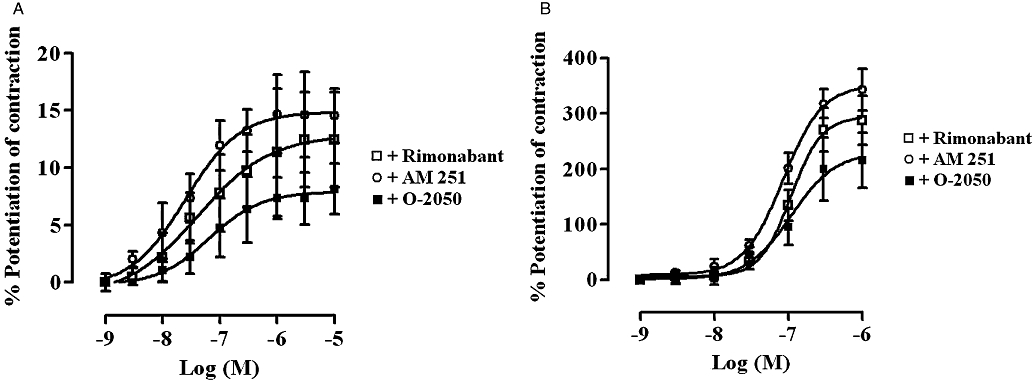Figure 4.

Concentration–response curves for the enhancement of the electrical field stimulation (EFS)-evoked contractions of the (A) rat and (B) guinea-pig myenteric plexus-longitudinal muscle (MPLM) by rimonabant (N-(piperidino)-5-(4-chlorophenyl)-1-(2,4-dichlorophenyl)-4-methyl-3-pyrazole-carboxyamide), AM 251 (N-(piperidin-1-yl)-5-(4-iodophenyl)-1-(2,4-dichlorophenyl)-4-methyl-1H-pyrazole-3-carboxamide) and O-2050 [(6aR,10aR)-3-(1-methanesulphonylamino-4-hexyn-6-yl)-6a,7,10,10a-tetrahydro-6,6,9-trimethyl-6-H-dibenzo[b,d]pyran]. The rat and guinea-pig MPLM were subjected to single electrical pulses of 0.5 ms duration, 110% supramaximal voltage at a frequency of 0.05 and 0.1 Hz respectively. Each curve was fitted by non-linear regression analysis. Each symbol represents the mean value for the increase in the EFS-evoked contractions expressed as a percentage of the amplitude of the contractions measured immediately before the addition of the same cannabinoid to the organ bath (n= 6). Vertical lines indicate the SEM.
